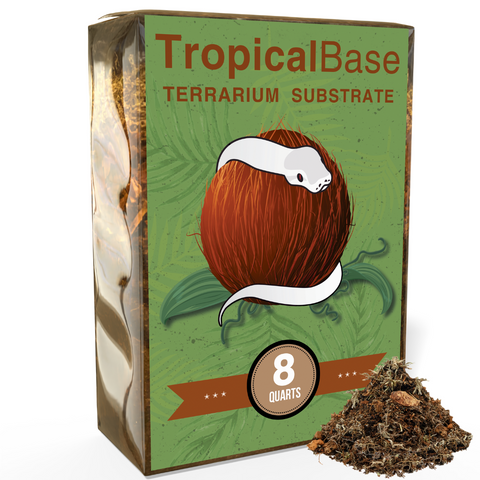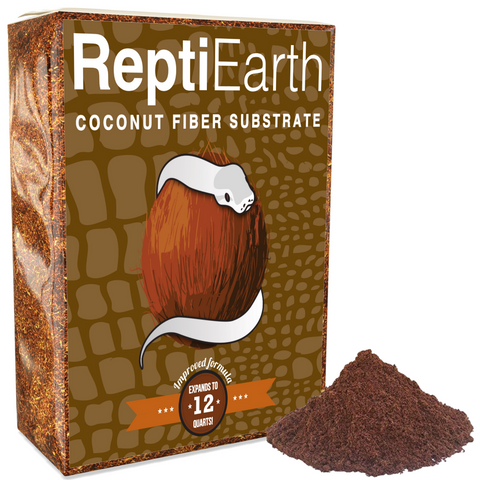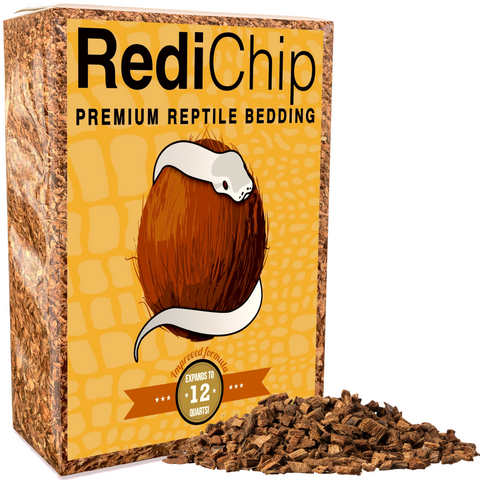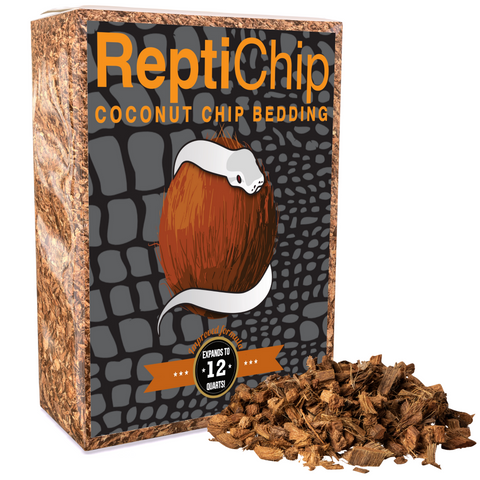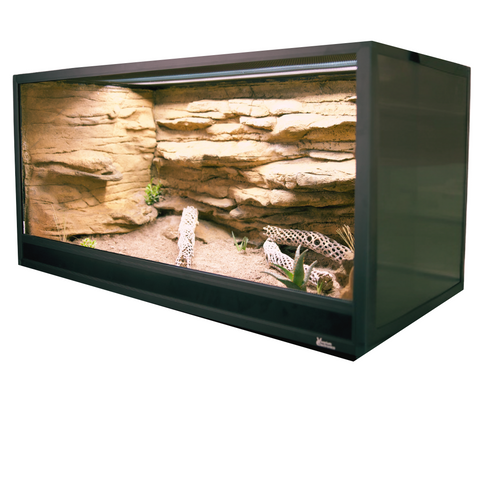Natural History
The emerald tree boa is a striking arboreal predator native to the rainforest canopies of South America, particularly within the Amazon Basin and the Guiana Shield. This species undergoes a complex and fascinating life cycle that begins at birth, as it is an ovoviviparous animal—meaning it gives birth to live young rather than laying eggs. A typical litter ranges from 6 to 20 neonates, and each newborn measures approximately 12 to 18 inches in length. Unlike many reptiles, the mother provides no care beyond birth, and the young must fend for themselves immediately after birth. Hatchlings, or more accurately, neonates, are born in vivid shades of orange or brick red and transform into their recognizable emerald green coloration over the first 9 to 12 months of life. This color transition is a gradual process influenced by hormonal changes and the development of adult pigmentation.
Emerald tree boas reach sexual maturity at around 3 to 4 years of age, although growth rate can be influenced by environmental conditions and prey availability. Adults commonly reach lengths of 5 to 6 feet, with some exceptional specimens exceeding 7 feet. Their overall lifespan in the wild is estimated to range from 15 to 20 years, while in captivity—with ideal husbandry—they can live beyond 20 years. Reproduction typically occurs once yearly, aligned with seasonal climate cycles, notably increasing rainfall. Mating is preceded by physical combat between males and followed by a gestation period of approximately 6 to 7 months.
The emerald tree boa is primarily nocturnal and displays many specialized behaviors suited to its arboreal lifestyle. It is a sit-and-wait ambush predator, relying on its camouflage and heat-sensing pits located along the upper lip to detect warm-blooded prey such as small mammals and birds. Once prey is located, the snake strikes rapidly, securing the target with recurved teeth before employing powerful constriction to subdue it. It then swallows the prey whole. This species is solitary by nature and exhibits strong territorial tendencies, especially related to favored hunting perches or basking spots. While not particularly aggressive, the emerald tree boa will display defensive behaviors when threatened, including coiling tightly on a branch and striking when approached or disturbed. Juveniles may be more flight-prone, but adults become more sedentary, relying on intimidation or concealment.
Interaction with conspecifics is limited, occurring primarily during the breeding season. Males may engage in combat via body wrestling to gain access to reproductive females, although these interactions are typically non-injurious. Despite a reputation for being reclusive, emerald tree boas are highly aware of their environment, responding to changes in temperature, humidity, and scent cues with impressive sensitivity. Their adaptive behavior includes seasonal shifts in activity to coincide with prey availability and environmental conditions, demonstrating a high degree of ecological intelligence.
In its natural ecosystem, the emerald tree boa occupies a mid-to-upper tier of the rainforest trophic structure. As a non-venomous constrictor, it plays a vital role in regulating populations of small vertebrates, particularly rodents and arboreal birds. In doing so, it aids in controlling potential agricultural pests and helps maintain ecological equilibrium. Although it is not a direct seed disperser or pollinator, by influencing prey populations, it indirectly affects plant community dynamics and supports the health of tropical ecosystems. Predators of the emerald tree boa include large raptors, such as harpy eagles, and occasionally arboreal carnivores like ocelots and tayras. The species’ vibrant green coloration, adorned with irregular white dorsal markings, provides excellent camouflage among tree branches and epiphytic foliage, reducing the risk of predation and enhancing its success as a stealth hunter.
Over evolutionary time, this boa has developed a suite of adaptations for life in dense canopy environments. These include strong prehensile tails for navigating branches, robust muscles for grasping and constricting prey, and a low metabolic rate suited for infrequent but large meals. Its unique heat-sensing capabilities further enhance its effectiveness as a predator in low-light conditions. In all, the emerald tree boa is a highly specialized and ecologically significant reptile whose natural history informs every aspect of its care in captivity. Understanding its behavior, physiology, and environmental niche is crucial for any keeper seeking to emulate a suitable environment and respect the complexity of this remarkable species.
Conservation Status
The emerald tree boa is currently listed as “Least Concern” on the International Union for Conservation of Nature (IUCN) Red List. This classification indicates that the species is not presently at high risk of extinction in the wild. The designation suggests the population is considered relatively stable across its native geographic range, which includes the tropical rainforests of the Amazon Basin, particularly in countries such as Brazil, Colombia, Venezuela, Peru, and parts of Bolivia and Ecuador. While there may be some localized declines, particularly in areas experiencing deforestation or human encroachment, the species as a whole maintains a broad distribution that has helped buffer it from more severe risk categories. The “Least Concern” status also suggests that the available data do not currently support a downward trend extensive or rapid enough to qualify it for a higher threat level under IUCN criteria.
Despite its “Least Concern” classification, the emerald tree boa faces several threats that could pose long-term risks to its population health if not addressed. One of the most significant threats is habitat destruction due to deforestation, particularly for agriculture, logging, and infrastructure development. The emerald tree boa is a highly arboreal species that depends on dense, intact rainforest canopies to hunt, thermoregulate, and reproduce. When these habitats are fragmented or destroyed, the snakes may be forced into smaller, isolated patches of forest, increasing their vulnerability to environmental changes and reducing genetic exchange between populations.
In addition to habitat loss, illegal collection for the pet trade presents another concern. While emerald tree boas are occasionally bred in captivity, wild-caught individuals are still illegally harvested and exported, often under harsh conditions that result in high mortality rates. Their striking green coloration and arboreal lifestyle make them attractive to exotic pet collectors, particularly when young animals display contrasting orange or red juvenile coloration. Moreover, climate change poses a subtler, long-term threat by altering precipitation patterns and causing shifts in regional temperatures that could impact prey availability and suitable microhabitats.
Conservation efforts aimed at protecting the emerald tree boa focus primarily on habitat preservation. Protected areas such as national parks and biological reserves throughout the Amazon Basin serve as critical strongholds for the species. These reserves not only preserve continuous tracts of rainforest but also safeguard essential ecological processes that support diverse reptile and amphibian populations. Legal protections in countries like Brazil, where environmental agencies regulate collection and trade, have helped reduce pressure from illegal capture, although enforcement remains inconsistent in remote regions.
Captive breeding programs play a supplementary role in the conservation of the emerald tree boa. While the species is relatively well-established in private and zoological collections, successful long-term breeding requires careful attention to temperature, humidity, and maternal incubation, which can be challenging to replicate. Nevertheless, these programs contribute to conservation by reducing demand for wild-caught specimens and preserving genetic diversity. Some institutions maintain studbooks and coordinated breeding efforts, which ensure the genetic health of captive populations. Although there are currently no large-scale initiatives to reintroduce captive-bred individuals into the wild, the captive population serves as a valuable safeguard should wild populations ever decline more severely.
Overall, while the emerald tree boa is not immediately endangered, continued habitat protection, responsible captive management, and enforcement of wildlife trade laws will be essential to ensure its long-term preservation. Educating keepers and the public about the ecological significance and natural history of this species can further aid conservation by promoting responsible care and discouraging illegal trade practices.
Native Range
The emerald tree boa is a non-venomous, arboreal boa species with a relatively restricted distribution in the lowland rainforests of northern South America. Its native range primarily encompasses the Amazon Basin, spanning across countries such as Brazil, Colombia, Venezuela, Ecuador, Peru, and parts of northern Bolivia. Within Brazil, it is most commonly found in the states that border the Amazon River and its tributaries. Though the entire Amazon biome is vast, the emerald tree boa has a patchy distribution within this expanse, favoring specific forest types and ecological conditions that support its highly specialized lifestyle.
In terms of macrohabitat, the emerald tree boa is closely tied to dense, lowland tropical rainforests—ecosystems characterized by high biodiversity, consistent rainfall, and complex vertical forest structure. These evergreen forests maintain largely stable climatic conditions year-round, which supports the boa’s thermoregulatory and foraging needs. Within these rainforests, the emerald tree boa demonstrates a strong preference for arboreal microhabitats. It is most commonly found in the mid to upper canopy, where it coils on sturdy, horizontal branches of mature trees and shrubs. Branches measuring 1 to 4 inches in diameter are ideal for supporting the boa’s semi-coiled resting position, which aids in camouflage and ambush hunting.
The climate in its natural habitat is humid and equatorial, with annual temperatures typically ranging between 75°F and 85°F. Daily fluctuations are minimal, and extremes beyond this range are rare. Humidity levels are consistently high, usually between 75% and 95%, and rainfall is abundant throughout the year, often exceeding 100 inches annually. Seasonal variation is marked more by changes in precipitation patterns than by temperature shifts. Many regions where the emerald tree boa is found experience a relatively drier season, though the environment remains humid compared to other ecosystems. These brief dry periods may influence feeding behavior and activity cycles but do not induce prolonged dormancy or brumation.
The emerald tree boa is primarily found at elevations from near sea level up to approximately 3,000 feet. It is rarely encountered above this elevation, as it relies on the thermally stable and humid conditions present in lowland and lower montane forest zones. These elevations offer access to diverse prey species and maintain consistent arboreal cover, which is essential for both shelter and hunting.
Certain environmental features are critical for the survival of this species. Access to clean water is necessary, although the boa typically does not descend to ground-level pools. Instead, it relies on canopy water sources such as rain accumulation on leaves and branch crotches. Dense vegetation and an intact forest canopy are indispensable, providing not only vertical space for locomotion and ambush hunting but also the cover necessary to evade predators and maintain optimal body temperature. The species tends to avoid open, deforested, or heavily disturbed areas, which lead to greater exposure to temperature fluctuation, reduced humidity, and loss of arboreal pathways. The forest structure, particularly areas with overlapping canopy and numerous horizontal perches, directly supports their sedentary and ambush-based hunting strategy.
In summary, the emerald tree boa is a habitat specialist with precise ecological requirements tied to humid, lowland rainforest environments. Its range is limited to specific portions of the Amazon Basin, where year-round warmth, high humidity, dense arboreal cover, and abundant rainfall create optimal conditions. Understanding these complex habitat interactions is essential for replicating proper environmental parameters in captivity.
Behavior
The Emerald Tree Boa is a primarily nocturnal species, meaning it is most active at night. In its native range within the humid, lowland rainforests of South America, it typically begins to stir shortly after dusk, engaging in hunting and exploratory behaviors throughout the evening. This activity pattern is closely tied to its arboreal lifestyle and the behavior of its prey, which consists mostly of small mammals, birds, and occasionally reptiles. In captivity, this nocturnal pattern often persists, although artificial light cycles and feeding schedules may adjust its activity. During the day, both in the wild and in enclosures, it typically remains motionless, draped over horizontal branches in characteristic coiled loops, with the head resting centrally atop the coils—an iconic resting posture that aids in camouflage and thermal regulation.
Seasonal changes influence its behavior, particularly in relation to breeding cycles and thermoregulation. In the wild, activity may diminish slightly during periods of excessive rainfall or during cooler months, with some individuals entering a mild state reduced metabolic activity, especially at higher elevations or latitudes. In managed care, a brumation-like period may be simulated through controlled drops in ambient temperature and light hours to stimulate reproductive behaviors. During the breeding season, males become more active, intentionally roaming in search of receptive females, displaying a marked increase in movement and tongue-flicking behavior driven by pheromone detection.
The Emerald Tree Boa is a solitary reptile by nature. In the wild, individuals maintain exclusive territories and avoid interspecific and intraspecific contact outside of mating periods. There are no documented dominance hierarchies, and aggressive encounters may occur if two individuals come into proximity, particularly males. Courtship involves males trailing and aligning with receptive females, often initiating contact by nudging or tactile stimulation. Copulation may last several hours. Females give birth to live young, which are fully independent at birth and do not receive any further assistance.
This species displays acute sensitivity to environmental cues. Temperature plays a vital role in its physiological and behavioral regulation. It prefers ambient temperatures ranging between 78°F and 85°F, with a slight nighttime drop. Exposure to temperatures below 75°F or above 90°F for prolonged periods can lead to stress or improper digestion. Photoperiod is another influential factor; although nocturnal, Emerald Tree Boas rely on day/night cycles to regulate circadian rhythms. Humidity also plays a significant role, with optimal relative humidity between 70% and 90%. Drops in humidity below 60% often result in incomplete sheds, while overly damp conditions, especially without adequate ventilation, can contribute to respiratory issues.
Its response to potential threats is primarily defensive rather than aggressive. When approached or threatened, it often remains still, relying on cryptic coloration and body posture to evade detection. If provoked, it may lunge with a defensive strike, although biting is typically a last resort. Emerald Tree Boas do not possess venom; they rely on powerful constriction to subdue prey. In the wild, the snake detects prey primarily through heat-sensitive pits located near the mouth, visual acuity adapted to low-light conditions, and chemical cues via Jacobson’s organ. These sensory adaptations are highly refined and allow for precise strike accuracy, even in complete darkness.
One of the most notable behavioral adaptations is its sit-and-wait predatory strategy. Unlike active foragers, it remains motionless for extended periods, draped over branches with the head lowered downward, waiting for unsuspecting prey to pass below. This energy-efficient hunting behavior is critical in a dense forest environment with limited visibility and infrequent prey encounters. Its prehensile tail and strong ventral musculature allow exceptional arboreal stability and locomotion, distinguishing it from more terrestrial constrictors. Thermoregulatory behaviors include moving between branches to access sun-flecked or shaded areas and subtle re-positioning to manage core body temperature.
In captivity, some behavioral differences have been documented. While still largely nocturnal, routine handling or feeding times can lead to increased daytime activity. Stress responses are frequent indicators of inadequate husbandry and may include excessive movement, flaring of the cloacal region, or defensive striking. Captivity often reduces the need for predatory behaviors due to feeding with pre-killed prey. However, enrichment practices, such as varied perching structures, can help stimulate more natural behaviors. Aggression levels can increase in smaller or improperly furnished enclosures, particularly if multiple snakes are housed together—an arrangement that is not recommended due to their solitary nature. With proper environmental design and maintenance of thermal gradients and humidity, Emerald Tree Boas adapt well to captivity but require specialized care to express their full range of natural behaviors.
Captivity Requirements
Enclosure Design
For emerald tree boas, enclosure design must mimic their natural environment in the lowland rainforests of the Amazon Basin, focusing on adequate vertical space, humidity control, and thermal regulation. Juveniles require a minimum enclosure size of 2 feet long by 2 feet tall by 1.5 feet deep to accommodate their arboreal habits without making the space so large that it hinders their ability to locate food. As adults can exceed 6 feet in length and commonly perch high off the ground, the minimum enclosure size for a single adult should be no less than 4 feet long by 3 feet tall by 2 feet deep. However, larger enclosures with increased vertical height (up to 4 feet tall) are highly recommended to allow for complex climbing structures and enrichment.
Enclosures should be constructed from materials that offer both durability and the capacity for maintaining high humidity. PVC is strongly recommended due to its resistance to moisture, ease of cleaning, and superior heat retention. Glass tanks may be used, but they require more effort to maintain humidity and may lead to heat loss unless appropriately insulated. Mesh cages are not suitable due to their poor humidity retention and lack of thermal stability.
Given that emerald tree boas are strongly arboreal, the internal layout must prioritize climbing opportunities. Branches should be arranged at various vertical and horizontal levels to replicate canopy perches—ideally between 1 to 2 inches in thickness to match the grip strength of the animal’s prehensile tail. These branches should be securely mounted to prevent collapse under the boa’s weight and should allow for partial or full coiling. A variety of perching diameters can promote muscular fitness. Secure hides placed at both the upper and lower levels of the enclosure provide psychological security and natural behavior expression. A designated basking site should be located near the top third of the enclosure, with a horizontal perch positioned directly under a heat source.
Escape prevention is critical, as emerald tree boas are strong but stealthy climbers capable of exploiting unsecured gaps. All enclosure doors and hatches should include locking mechanisms. Screen tops, if used, must be securely clamped or fastened, and doors must close flush without gaps larger than 0.25 inches.
Lighting and Heating
Providing the proper lighting and thermal gradient is essential for the long-term health of emerald tree boas. Although nocturnal by nature, they benefit physiologically from exposure to ultraviolet B (UVB) radiation to support calcium metabolism and stimulate natural behaviors. A low-output UVB lamp in the 5-7% range (such as a T5 linear tube) is recommended, mounted approximately 10 to 12 inches above the primary basking perch and filtered only through mesh that does not block UVB transmission. Direct UVB exposure should follow a cycle of 10 to 12 hours per day, depending on the season, simulating natural equatorial photo periods. During winter months, a subtle decrease to a 10-hour day may encourage seasonal behaviors like reduced activity.
Temperature gradients are crucial, particularly given the emerald tree boa’s sensitivity to overheating. A focused basking area should be maintained at 86 to 92°F. Ambient air temperature in the upper portions of the enclosure should sit around 78 to 82°F, while cooler areas—typically in the lower third—should drop to the mid-70s°F. At night, temperatures can safely fall to 72–75°F. Under no circumstances should temperatures exceed 92°F, as this can lead to thermal stress and respiratory problems. All heating elements, whether ceramic heat emitters or radiant heat panels, must be controlled by a reliable thermostat and monitored through a digital thermometer with a probe placed at the basking perch. Never use heat rocks, as they provide uneven and often dangerously high surface temperatures that can cause severe burns.
Substrate and Enrichment
Substrate should be selected not only for its ability to retain moisture but also for its safety and capacity to support naturalistic enclosure maintenance. For emerald tree boas, which rarely descend to the enclosure floor, a substrate that promotes humidity and limits mold growth is ideal. ReptiChip or a blend of ReptiEarth and long-fiber sphagnum moss such as TropicalBase provides excellent water retention, reduces odor, and minimizes the risk of respiratory issues. This substrate also supports the maintenance of environmental microclimates within the enclosure. A 2- to 3-inch layer should be maintained and spot-cleaned frequently, with deep cleaning performed every 4 to 6 weeks.
Though primarily arboreal, emerald tree boas benefit from enrichment that stimulates natural behavior. A variety of branches at differing orientations helps facilitate thermoregulation, muscle development, and increased behavioral expression. Perches made from natural wood such as manzanita or cork bark not only resemble naturalistic materials but also help maintain the stability of humidity and temperature. Strategically placed visual barriers in the form of artificial foliage or cascading live plants help reduce visual stress and support a sense of security, especially in high-traffic areas.
At least two hides should be present—one at mid to high elevation and one toward the cooler, lower part of the enclosure. These hides can be naturalistic cork tubes or recessed boxes and should be big enough to accommodate the curled body of the snake, while still providing a sense of shelter. Avoid hiding places that are oversized or overly transparent, as they won’t serve the soothing function they are meant to provide.
Humidity and Hydration
Emerald tree boas require high ambient humidity to maintain respiratory health and ensure proper shedding. Ideal average relative humidity should remain between 70% and 80%, with peaks up to 90% during daily misting cycles. Humidity should be maintained through a combination of daily manual misting, the use of ultrasonic foggers during nocturnal hours, and moisture-retaining substrates. Installing a timed fogging or misting system can greatly aid consistent husbandry, especially in drier climates or during seasonal humidity drops. All sources of moisture should be paired with adequate ventilation to prevent stagnant air and fungal growth.
To maintain humidity without over-saturating the enclosure, you can mist once or twice daily—early morning and late evening are recommended. A fine mister allows for gentle saturation of perches and foliage without drenching the animal directly, which could cause stress. Supplemental humidity chambers can be included by creating a humidity hide: a sealed container with a single entrance hole, filled with slightly moistened moss and placed midway up the enclosure. This can offer refuge during dehydration or shed cycles.
Hydration in emerald tree boas occurs primarily through licking water droplets directly off surfaces. After misting, the snake will often be observed drinking from leaf surfaces and cage walls. However, a large, spill-resistant water bowl should also be available at all times. The bowl should be placed on the floor of the enclosure away from basking elements to limit evaporation. Water should be changed daily and the container scrubbed at least once per week to prevent bacterial growth.
Proper hydration and humidity are best monitored using a digital hygrometer with a remote probe placed midway and high up in the enclosure to track environmental variation. Avoid analog gauges as they tend to be inaccurate. Maintaining appropriate moisture levels is vital to prevent incomplete sheds, dehydration, and upper respiratory infections, all of which are risks associated with improper humidity.
Diet & Supplementation
In its natural habitat, the emerald tree boa is a carnivorous arboreal constrictor that primarily consumes a diet composed of small vertebrate prey. Juveniles tend to feed on smaller animals such as amphibians, lizards, and small invertebrates, but as they mature, their diet shifts toward small mammals and birds. Adult emerald tree boas most commonly prey on rodents, marsupials, and perching birds, relying on the dense rainforest canopy to locate and ambush prey that shares the arboreal environment. This species demonstrates dietary opportunism within the constraints of its ecological niche, and prey size typically does not exceed one-third of the snake’s own body mass.
Emerald tree boas employ an ambush predation strategy, relying heavily on a sit-and-wait approach. They are equipped with heat-sensing pits located along the upper lip, which allow them to detect endothermic prey even in low-light conditions. These pits, combined with a highly developed Jacobson's organ, help the boa detect chemical cues in the surrounding environment. Vision also plays a role in targeting prey, especially within the low-light but visually complex canopy environment. Once a suitable prey item comes within striking distance, the boa uses its powerful strike to seize the animal with its recurved teeth, then coils its body tightly around the prey to apply constriction. Death occurs quickly via cardiac or respiratory arrest before the meal is swallowed whole.
Seasonal variation in environmental conditions influences the emerald tree boa’s metabolic rate and feeding frequency. During cooler or drier months, the snake’s activity may decrease, along with a subsequent reduction in feeding. In the wild, feeding opportunities may be inconsistent, especially in unfavorable weather conditions or during the dry season when prey availability diminishes. Juveniles exhibit higher metabolic rates and tend to feed more frequently than adults. Neonates will often feed every 1 to 2 weeks, typically targeting small lizards or frogs, while mature individuals may feed only once every 3 to 4 weeks, particularly if large prey is consumed.
In captivity, the diet of the emerald tree boa should be designed to closely resemble that of its wild counterpart in nutritional composition and feeding behavior. Appropriately-sized rodents, primarily frozen-thawed rats and mice, are the standard dietary staple in captivity. While wild emerald tree boas occasionally feed on birds, captive individuals are generally maintained on mammals due to convenience and reduced risk of injury or parasitic transmission. Maintaining nutritional balance involves consideration of prey size, age-appropriate feeding intervals, and supplementation. Although whole rodents generally provide a complete nutrient profile, neonates or juveniles may benefit from supplemental calcium, particularly if bone density and growth are a concern. Prey items should be gut-loaded or otherwise nutritionally optimized if acquired through live feeding, though live prey is discouraged due to the risk of injury to the snake.
Feeding issues in captivity are not uncommon and may include persistent refusal of food, obesity from overfeeding, malnutrition due to improper prey selection, or digestive issues. Stress, improper temperatures, inadequate enclosure design, or illness are common underlying causes of food refusal. Offering prey during the evening or night, when the boa is naturally more active and hunting-inclined, may help stimulate feeding. Providing environmental enrichment — such as elevated perches, foliage cover, and adjustable lighting — can encourage more natural feeding behavior. Additionally, varying prey type or scenting prey with items like bird feathers may help coax reluctant feeders, particularly individuals accustomed to avian prey in the wild. Captive emerald tree boas are highly sensitive to feeding errors; therefore, keepers must avoid overfeeding, monitor body condition regularly, and adhere to an appropriately spaced meal schedule to maintain optimal health and avoid obesity-related complications.
Reproduction
Emerald Tree Boas typically reach sexual maturity between 3 to 4 years of age, although maturity can vary slightly depending on individual growth rates and husbandry history. Females are generally larger and more robust than males, exhibiting clear sexual dimorphism. Adult females may exceed 6 feet in length with a more massive body, while males are usually smaller, averaging around 4 to 5 feet, and possess relatively longer spurs near the cloaca, which are used during copulation. These morphological differences are helpful for accurate sex determination prior to pairing.
Courtship behavior in Emerald Tree Boas is complex and may begin with tongue-flicking and body rubbing. Males often exhibit increased activity during breeding season, actively searching the enclosure for the female. When a male locates a receptive female, he will typically align alongside her and rhythmically nudge and rub against her body using his spurs. Copulation may be preceded by hours or even days of this interaction before the male attempts to insert one hemipenis. Mate selection is largely instinctual, and while captive-born individuals may accept partners more readily due to accustomization to confined environments, wild-caught specimens may be more selective and display greater variability in receptivity.
Environmental cues are essential to stimulate reproductive behavior in captivity. In the wild, breeding corresponds with the onset of the rainy season, typically between November and March. Captive breeding success increases when keepers mimic seasonal transitions. This involves gradually reducing ambient nighttime temperatures from around 80°F to 72°F over several weeks in late fall, while maintaining daytime temperatures near 84°F. Increased humidity, replicating rainy season conditions, should reach 85% to 90% during this time. Daily misting or the use of a timed misting system helps sustain this elevated moisture level, triggering hormonal and behavioral changes associated with reproductive readiness. Alterations in photoperiod, mimicking a shift to 10 hours of daylight and 14 hours of darkness, can further cue breeding activity.
Emerald Tree Boas are ovoviviparous, giving birth to live young rather than laying eggs. Successful copulation requires the female to be in optimal body condition, with sufficient fat reserves and overall health. Although the species is solitary by nature, short-term introduction of a male into the female's enclosure during the breeding window is standard practice. It is critical to closely monitor all interactions, as stress or aggression—especially from unreceptive females—can occur. Some keepers may use neutral enclosures when introducing pairs for the first time, reducing territorial behaviors or defensive posturing that may emerge when an unfamiliar male enters a female’s established habitat.
Breeding challenges in captivity are often related to suboptimal environmental parameters or poor mate compatibility. Failure to lower night temperatures or maintain proper humidity can prevent ovulation in females or suppress sexual motivation in males. Signs of stress, including refusal to eat, persistent restlessness, and defensive behavior, may indicate unsuitable breeding conditions. Ensuring enclosures are appropriately planted, with ample climbing branches and low disturbance, helps reduce stress and supports reproductive activity. Incompatibility between animals may require alternative pairing with different individuals or extended separation periods before reintroduction. Hormonal cycling in females is time-sensitive, so males should only be introduced when females demonstrate signs of receptivity, such as increased tongue-flicking and calm disposition when approached.
Reproductive success with Emerald Tree Boas demands a precise balance of environmental simulation, careful observation of individual behavior, and patience. With appropriate care, many captive pairs can reproduce reliably, contributing to conservation efforts and breeding programs for this visually striking and ecologically fascinating species.
Incubation & Neonate Care
The emerald tree boa is an ovoviviparous species, meaning it gives birth to live young, but unlike true viviparous species, the developing embryos grow inside eggs that remain within the mother’s body until they are ready to hatch. These internal eggs do not receive direct nutrient support from the mother via a placenta, as is the case with mammals, but instead rely on yolk sacs for nourishment. Once development is complete, the mother gives birth to fully formed neonates that hatch immediately prior to or during birth, emerging from thin, membranous eggs within the birth canal.
Gestation in emerald tree boas typically lasts between 6 to 7 months, with slight variation depending on environmental conditions such as ambient temperature and barometric pressure. During this time, females will often reduce food intake and may stop feeding altogether in the latter stages. Pregnant females require stable, warm, and humid environments to ensure successful embryonic development. Temperatures within the enclosure should be maintained between 84°F and 88°F with a basking area not exceeding 90°F. Nighttime drops should not fall below 78°F. Relative humidity should remain consistently between 70% and 90%, mimicking the moist, equatorial lowland rainforests in which they are naturally found. Proper hydration and thermal gradients are critical in preventing complications such as embryonic death or dystocia, a condition in which the female is unable to successfully pass neonates.
When the time for birth arrives, females show behavioral changes such as restlessness, increased climbing, or prolonged basking. Birth typically occurs at night or during the early morning hours and may last several hours. Females deliver an average of 6 to 12 neonates per litter, though numbers as high as 20 have been recorded under optimal conditions. Stillborns and undeveloped embryos may occasionally be present, and these should be promptly removed from the enclosure to prevent bacterial contamination or mold growth. The mother exhibits no maternal care after birth and should be monitored for stress or signs of retained offspring. In rare cases, egg binding or incomplete birth can occur, requiring immediate veterinary intervention to prevent life-threatening complications.
Neonates are typically 12 to 18 inches long at birth and display striking color patterns that differ markedly from adults. Instead of emerald green, newborns are either reddish-orange or brick red, with the signature adult coloration developing gradually over the first 6 to 12 months. Neonates should be housed separately from the adult female to reduce the risk of predation, cannibalism, or accidental injury, as well as to facilitate individualized monitoring. Each neonate should be placed in a secure enclosure measuring approximately 12 to 18 inches in height with ample vertical climbing structures and foliage for security. Ambient temperatures should be kept at 78°F to 86°F with relative humidity maintained between 75% and 90%. A nightly drop to around 75°F is appropriate.
Shedding typically occurs within the first 7 to 14 days after birth, at which time most neonates become receptive to feeding. The first meal can consist of appropriately sized pinky mice offered via tongs or left overnight. Some neonates may require scenting or short fasting periods before accepting prey. Feeding should occur every 5 to 10 days, depending on individual response and growth, with careful monitoring to avoid regurgitation, which is more common in neonates due to stress or improper husbandry. Clean, shallow water should be available at all times, and misting should occur regularly to assist with hydration and successful shedding.
Handling should be minimal during the first several weeks, limited to routine husbandry and health checks. Emerald tree boas, especially neonates, can be defensive and will strike if stressed. Tongs or hooks should be used when necessary to avoid injury to both animal and keeper. Overhandling can lead to feeding refusal or elevated cortisol levels, delaying development. Common health concerns in neonates include incomplete sheds, respiratory infections from improper humidity or ventilation, and failure to thrive due to stress or poor feeding responses. Regular record-keeping and vigilance are essential in ensuring that each neonate grows into a healthy juvenile capable of thriving in captive conditions.
Conclusion
In conclusion, the emerald tree boa represents a unique and specialized reptilian inhabitant of the Amazonian canopy, whose successful care in captivity depends on an in-depth understanding of its natural history, environmental physiology, and behavioral patterns. As an ambush predator with precise ecological requirements, this species thrives only when keepers replicate the complex interplay of temperature, humidity, light cycles, and structural enrichment that define its native habitat. From its arboreal hunting strategy and nocturnal rhythm to its intricate reproductive cycle and distinctive ontogenetic color change, every aspect of its biology informs the standards for optimal husbandry.
Captive enclosures must prioritize vertical space, secure and appropriately textured perches, and consistent environmental control, particularly in the regulation of ambient humidity and basking temperatures. Dietary needs are relatively straightforward but require careful management to avoid undernutrition, obesity, or digestive complications. Breeding requires both environmental sophistication and patience, as courtship and gestation are governed by seasonal cues that must be carefully simulated. Neonatal care demands a carefully controlled microenvironment and attentive monitoring, particularly during their vulnerable first months.
While not an endangered species, the emerald tree boa still faces persistent threats in the wild, including habitat loss and illegal collection. By practicing responsible captive management—grounded in scientific understanding and ethical husbandry—keepers can play a meaningful role in both the preservation of this species and the promotion of awareness regarding the ecological value of Amazonian reptiles. For those willing to meet its high standards of care, the emerald tree boa offers a window into one of the most fascinating evolutionary narratives of the neotropical rainforest.



